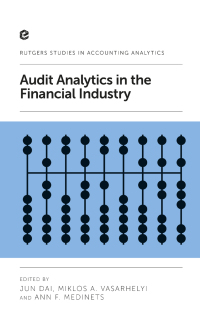Question
For each term in the first column, select the partial (or compete) definition or illustration. Each partial (or complete) definition or illustration may be used
-
For each term in the first column, select the partial (or compete) definition or illustration. Each partial (or complete) definition or illustration may be used only once, or not at all
-
For each term in the first column, select the partial (or compete) definition or illustration. Each partial (or complete) definition or illustration may be used only once, or not at all.
-
Term Partial (or Complete) Definition or Illustration -
Anchoring bias
-
Availability bias
-
Confirmation bias
-
Audit evidence
-
Control risk
-
Professional skepticism
-
Relevant assertion
-
Significant assumption
-
Overvaluing information that quickly comes to mind.
-
Starting with an initial belief and then insufficiently adjusting that belief when contrary information is encountered.
-
Seeking and treating as more persuasive information that is consistent with ones beliefs.
-
Overestimating ones abilities.
-
All information prepared within the audited organization.
-
Information used by the auditor that corroborates or contradicts the assertions in the financial statements.
-
Information used by the auditor that corroborates the assertions in the financial statements.
-
The risk that the auditors procedures will lead them to conclude that a misstatement does not exist when in fact it does exist.
-
The risk that a material misstatement that could occur will not be prevented or detected on a timely basis.
-
A financial statement assertion that is probable of misstatement given the nature of the further audit procedures performed.
-
A financial statement assertion that has a reasonable possibility of containing a misstatement or misstatements that would cause the financial statements to be materially misstated.
-
A financial statement assertion that has a reasonable possibility of containing a misstatement or misstatements that would cause the financial statements to be materially or immaterially misstated.
-
An attitude that includes a questioning mind, and a critical assessment of audit evidence.
-
An attitude that includes a subjective mind and a detailed assessment of audit evidence.
-
Every assumption relating to a significant financial statement assertion.
-
As related to an accounting estimate, an assumption for which a reasonable variation would materially affect the measurement of that accounting estimate.
-
Step by Step Solution
There are 3 Steps involved in it
Step: 1

Get Instant Access to Expert-Tailored Solutions
See step-by-step solutions with expert insights and AI powered tools for academic success
Step: 2

Step: 3

Ace Your Homework with AI
Get the answers you need in no time with our AI-driven, step-by-step assistance
Get Started


